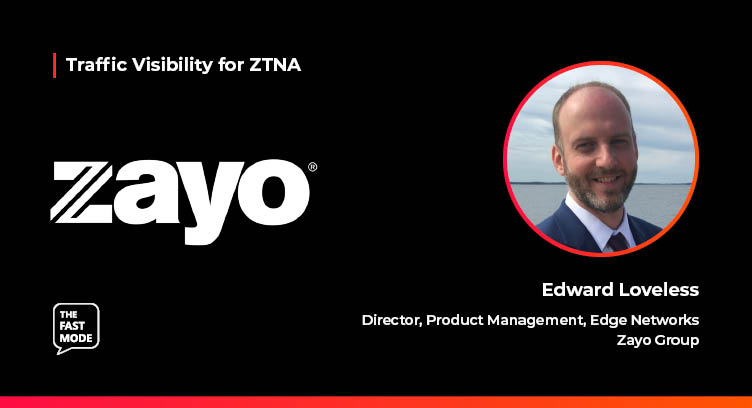The Fast Mode spoke to Edward Loveless, Director of Product Management, Edge Networks at Zayo Group on the impact of traffic visibility on ZTNA networks. Edward joins us in a series of discussions with leading cybersecurity and networking vendors, assessing the evolution of ZTNA technologies, the roadmap for ZTNA deployments, the benefits of ZTNA for enterprise and telco networks, and the need for real-time traffic visibility technologies such as DPI for ZTNA.
Ariana: Why is ZTNA the future of enterprise security?
Edward: As enterprises embrace distributed workforces and resources across hybrid environments, a traditional approach to network perimeter security is insufficient. Zero trust network access (ZTNA) represents the future by providing protection based on granular policy, user identity and context rather than solely the network.
Essentially, ZTNA is the secure gateway users authenticate to access resources, regardless of location, device or network. This framework enforces access policies tied to individual identities, with no outright trust granted; every corporate resource access attempt requires authentication and authorization.
Whether inside or outside the corporate walls, ZTNA delivers identity-centric protection. By focusing on policy, identity and content rather than strict network security, ZTNA balances accessibility while providing comprehensive security for today's mobile and distributed enterprise workforce. As hybrid business environments become the norm, ZTNA's zero trust principles and software-defined policy enforcement make it the ideal approach to scalable, identity-based security.
Ariana: What do you consider are the core features (must haves) of ZTNA?
Edward: The following are core capabilities ZTNA solutions must provide:
- Continuous authentication checks: unlike legacy VPNs that validate users only at initial login, ZTNA verifies identity and permissions for every request to access protected applications and resources before granting admittance. This feature ensures unauthorized users can't gain continued access.
- Location-independent secure access: ZTNA grants application access based on user identity and context — not network locations — enabling secure connectivity for today's hybrid work environments.
- Least privilege access controls: ZTNA solutions must strictly enforce granular access policies according to the principles of least privilege - only allowing users the specific, minimized access required for their role. This approach reduces the risk of excessive permissions.
- Comprehensive traffic inspection: ZTNA gateways inspect all traffic flows end-to-end — not just along the perimeter — and log activity for analysis and threat detection. This capability provides visibility and security for east-west and north-south traffic.
- Automation and integration capabilities: ZTNA solutions should simplify administration by integrating with existing IT infrastructure through APIs, allowing policies and security actions to be automatically enforced based on environmental context and events.
Edward Loveless is the Director, Product Management - Edge Networks for Zayo Group. Zayo’s future-ready network spans over 17 million fiber miles and 142,000 route miles, with tailored connectivity and edge solutions that deliver exceptional experiences from core to cloud to edge. Loveless is an enterprise networking expert with 20 years of experience in telecom and cybersecurity.
This interview is a part of The Fast Mode's Next-Gen DPI Traffic Visibility for ZTNA segment, featuring over 40 leading cybersecurity and networking solution providers and their views on the importance of traffic visibility for ZTNA. A research report on this topic will be published in January 2024 - for more information, visit here.


















